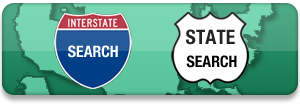The Tuolumne River near Yosemite National Park is one of the most pristine and exciting rivers I’ve experienced. But is river rafting safe during COVID-19? My fifteen-year-old son and I rafted the Tuolumne River for three days with OARS, and not only did we have the usual amazing time on the river I’ve come to expect from an OARS trip, but we felt safe and responsible, too.

All of our OARS trips include the same basic formula: clean mountain air + clean river water + starry skies and lots of adventure. Our three day, two night trip on the Tuolumne included all of the above, plus some additional safety measures that had been put into place.
Instead of flying, we drove to the meeting place from Southern Oregon (about a 7 hour drive) and stayed overnight in charming Groveland, California near the entrance of Yosemite National Park at the Groveland Hotel, which I highly recommend for their friendly hospitality, ample outdoor deck space with in-house dining, and whiskey bar (yes, really!).
The next morning, we met with our group of 12 additional rafters and trip leader, Rebecca, then boarded an OARS bus for the 45 minute drive to the put-in on the Tuolumne. We began experiencing the COVID-19 safety measures immediately.

How OARS makes river rafting safe during COVID-19
- Before arrival, every guest filled out a health check-list and survey.
- At the pre-trip meeting, everyone’s temperature was checked.
- Everyone’s temp was checked every day of the trip thereafter.
- Face coverings were worn by all on the bus and any other enclosed space, plus the kitchen area of camp every day.
- Face coverings were also worn any time guests from separate families/parties interacted at a distance of less than six feet, such as in rafts, while setting up camp, etc.
- Individuals were assigned all gear, including tents, pads, chairs, and sleeping bags…no swapping.
- The OARS crew always wore face coverings while preparing food and setting up camp, and hand washing was mandatory for ALL multiple times per day.
- Hugs were banned, but hand waves and air kisses sufficed!
- Hand sanitizer, soap, and water for hand washing were available at all times.

What you can ALWAYS expect from OARS on the Tuolumne
Whitewater, whitewater, whitewater! This river is technical and fast-moving, and offers a lot of Class IV and Class V rapids. As such, guests spend their time in paddle boats instead of individual IKs (inflatable kayaks, a.k.a ‘duckies’). At first my teen was bummed to not be able to man his own IK, but we agreed that the thrill of the whitewater made paddle-boating more fun than usual.
The river’s water level is controlled by daily releases from Hetch-Hetchy dam, which adds a particular challenge: your start time on the river might change daily based on how much water is flowing. For instance, on day 1, the water was released at 10 am, and we were off and floating. The last day, it wasn’t flowing until 3 pm, which meant we hiked and swam first.

Each day, we camped at another iconic location along the river, with views of foothills, eagles and hawks, and whitewater. The banks of this river are exposed and the sun beats down hot, but the river water is cold, so you’ll be refreshed often!
Our guides took us on side hikes up canyons and creek beds every day, where we were delighted by swimming holes and jumping rocks. Each hike was more ‘canyoneering’ than walking, so river shoes with good traction are a must. The hikes are short in length, however, and definitely worth the effort.
Each meal was carefully prepared for us by our OARS crew, and we dined on salmon, steak, eggs, bacon, French toast, fresh fruit, salad wraps, and more. Two beers or soft drinks per person, per night are included, as well as wine at dinner. Guests are free to bring their own additional beverages as desired, to be consumed in camp (not on the river).

If you have more generalized questions, or need camping, packing, or ‘grover’ (portable camp toilet) advice, please see our post on what to expect on every OARS trip.
Perhaps best of all about a Tuolumne River trip, you’re in close proximity to Yosemite! I highly recommend pairing your OARS adventure with some time exploring Yosemite National Park.


























































